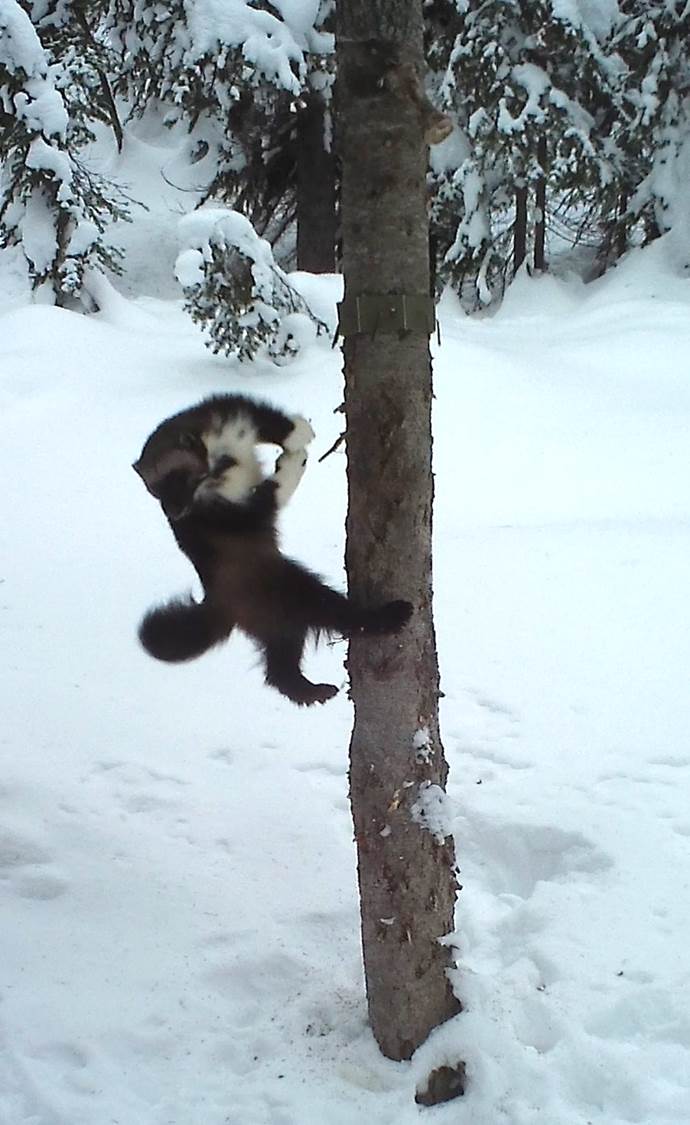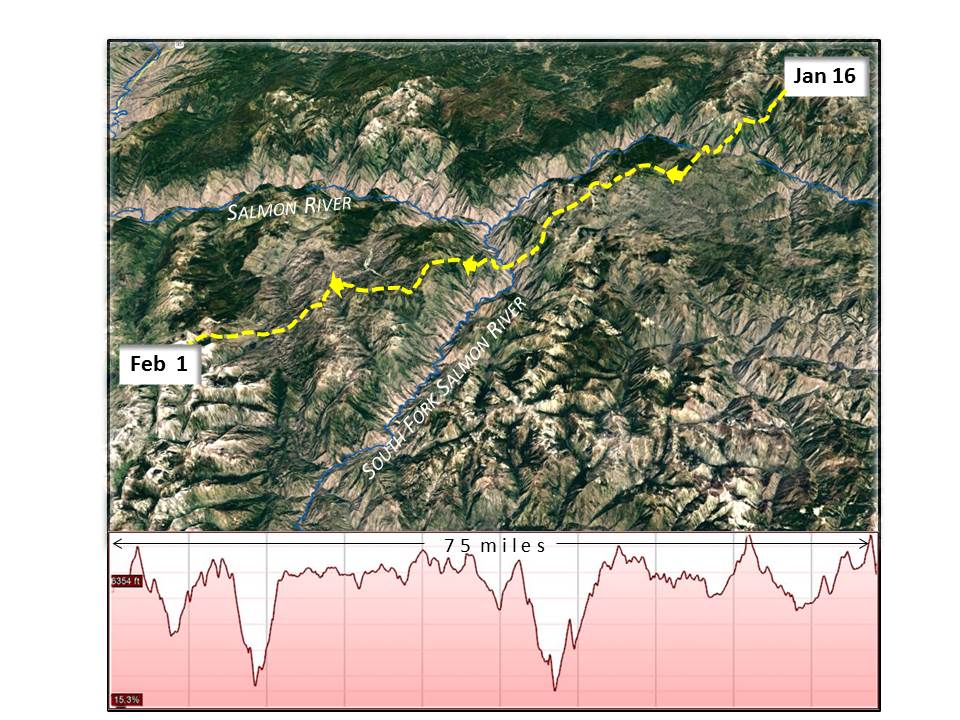With all the trail cameras in the woods these days, it’s hard for even a rare animal to go unnoticed. And if you’re a wolverine sporting white feet instead of brown, you can bet you’ll get attention. A biologist with the Idaho Department of Fish and Game discovered a very distinctive-looking wolverine on a series of pictures from a remote camera put out last winter as part of a survey for fisher. This wolverine had 2 white paws and a white foreleg, markings not typically seen in west-central Idaho wolverines. Soon after, another biologist was going through pictures from a different part of the state and found the same wolverine!

Piecing the story together from the dates on the photographs, the wolverine, nicknamed ‘Whitefoot’, was along the Magruder Corridor in the Clearwater Region in mid January, then headed south, crossed the Main Salmon River, likely also crossed the South Fork Salmon River, and arrived north of McCall 15 days later. As the crow flies, the 2 cameras were about 60 miles apart. As the wolverine lopes, the distance was surely greater. Although we don’t know the exact path it took, one potential route through good wolverine habitat covered 75 miles, with a total elevation gain of 39,000 feet and similar amount of elevation loss as the animal crossed the rugged terrain of the Salmon River Mountains. The wolverine made a second appearance at the McCall-area camera in April; where it’s gone since then is unknown.

White coloration on wolverine toes and paws is a genetic trait that shows up in some geographic areas more than others. Interestingly, another wolverine with even more white on its legs was photographed recently in the Franck Church Wilderness by interns from Taylor Ranch. When recognizable animals pop up unexpectedly in camera photos, especially with the genetic trait of whiteness in toes and paws, it teaches us something new about the capacity for wolverines to travel across the landscape and the possibility that they could be related somehow.
